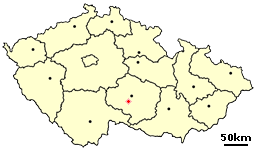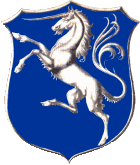THE SIXTY GUARDSMEN, CERTAIN THAT THEY WERE THE RIGHT MEN FOR THE JOB, VOLUNTEERED TO "GO SOUTH" IN 1961 UNDER TERMS OF ABSOLUTE SECRECY. NOT EVEN THEIR FAMILIES KNEW WHERE THEY WERE GOING.
AS PRESIDENT JOHN F. KENNEDY took the oath of office in 1961, he inherited from the Eisenhower administration a risky covert operation plan. Well underway by this time, the plan involved a CIA initiative to arm, train, and aid Cuban exiles in the overthrow of Fidel Castro's communist dictatorship. Receiving understated risk assessments and conflicting advice from all sides, Kennedy grew nervous about the planned invasion-fearful that America's involvement would become known to the world. He began to alter the plans, insisting that America be able to "plausibly deny" any part in the coup. Kennedy's tinkering, among other things, created the embarrassing and costly event remembered in history as the "Bay of Pigs." Though Kennedy eventually had to acknowledge America's involvement in the disastrous affair, he steadfastly denied that American military personnel had invaded the Cuban nation. Not until 1998 did CIA officials publicly acknowledge the role that eight Air National Guard members had played at the Bay of Pigs to support beleaguered Cuban resistance troops. All eight men were from Alabama. Only four came home.
In 1960, during the heat of the Kennedy-Nixon election campaign, Alabama's Governor John Patterson had approved a request by General Reid Doster, commander of the Alabama Air Guard, to recruit Air Guard personnel to assist the CIA. Their mission was to train and advise the pilots of the resistance force, to fly transport missions, and to arm and maintain the planes. The Cuban exiles were to execute the invasion.
Exiled Cuban pilots would fly B-26 Douglas Invaders, painted to look like those used in Castro's air force. Invasion planners hoped that the Cuban population would believe that Castro's own pilots were in revolt against him, inspiring the people to join the invasion force in a mass uprising. The Alabama Air Guard had been chosen because they were the last American military unit to fly and maintain the obsolete B-26.
In all, there were sixty Alabamians recruited as CIA civilian-contract personnel and sent to Central America to train the Cuban exiles in 1961. Most of the recruits lived within fifteen miles of the Birmingham airport and had followed a similar path toward their moment in history: service in the Air Force as aircraft mechanics, employment by Hayes Aircraft, time as "weekend warriors" in the Alabama Air Guard, and finally service as full-time Air Guard technicians. A close-knit group, they were "good ole boys" in its best sense-pulling their own weight and refusing to let a tough task beat them. The sixty guardsmen, certain that they were the right men for the job, volunteered to "go south" in 1961 under terms of absolute secrecy. Not even their families knew where they were going.
Wearing civilian clothes for the duration, the Alabamians began to deploy in small groups to a training base in Guatemala. They worked hard to prepare the Cuban resistance flight crews, developing strong friendships that solidified their commitment to the mission. Operations Officer Joe Shannon saw the group as Cold War warriors trying to keep communism from gaining a foothold in the Western Hemisphere. It would be the Spring of 1961 when their part in the Cold War suddenly got hot.
The original plan called for CIA-supported radio transmissions into Cuba, encouraging an uprising. The propaganda war would be followed by a daytime invasion near Trinidad-a city known for its anti-Castro activities. Should the mission fail, the resistance fighters would be able to disappear into the nearby Escambray Mountains and elude capture.
The CIA had been honing the plan for a year, but Kennedy thought it was too "noisy" and insisted on changes. The revised plan called for a night invasion of a more obscure region-la Bahia de Cochina, or "the Bay of Pigs." The bay had an airstrip, which appealed to Kennedy because, in theory, it would allow for most of the air strikes to take off from Cuban soil. But swamps surrounded the bay, precluding any way of escape for the liberation forces should something go wrong with the mission.
According to the plan, sixteen B-26s, manned by Cuban resistance crews, were to completely disable Castro's air force in a series of bombing raids on April 15 and 16-a critical element to the success of the coming land invasion. The landing force, ammunition, and plane fuel would arrive in the bay on board five merchant vessels before dawn on April 17. The resistance troops would then take the beachhead and the airstrip. But under Kennedy's orders, only eight B-26s made the journey on April 15, and none were allowed to follow to "clean up" anything that remained as an air threat. As a result, only half of Castro's planes were destroyed; the other half was ready and waiting for the invasion force as it made its way to the beachhead on April 17.
Castro's air force destroyed two of the merchant vessels waiting off shore to resupply the troops; the other three ships quickly departed, taking the remaining troops, ammunition, and fuel with them. The resistance fighters reached the beachhead and temporarily secured the airstrip, but as the sun came up, they found themselves trapped in a hornet's nest.
The B-26 air crews provided as much support to the ground forces as they could, but with little effect. The liberation air force lost five of its sixteen B-26s and their crews that day. Those who survived the firestorm that morning limped back to the secret GIA base at Puerto Cabezas, Nicaragua, which served as the staging point for the operation. There they worked with the Alabama guardsmen to patch up the damaged planes and kept flying back to Cuba-each mission being more than six hours over open water without navigational aids. They went without sleep until exhaustion set in. By the next day, officers in Washington were telling Kennedy that U.S. planes must fly in to support the invasion.
Faced with exhausted aircrews and a desperate situation on the ground in Cuba, the CIA finally authorized the Alabama guardsmen to fly missions on April 19. The authorization came with a warning: should they get captured, the United States would declare to the world that the men were mercenaries and disavow any knowledge of their activities. Despite the grim prospect, four Alabama pilots and four crewmen stepped forward. The lead formation was commanded by Billy "Dodo" Goodwin, a major in the Air Guard, and Gonzalo Herrera, a fearless Cuban pilot known as "El Tigre" by his compatriots. Alabama Guard pilots Joe Shannon, Riley Shamburger, and Thomas Willard "Pete" Ray also volunteered. Crewmembers from Alabama included Leo F. Baker, Wade Gray, Nick Sedano, and James Vaughn. A second exiled Cuban pilot, Mario Zuniga, and his observer rounded out the strike force.
In the predawn hours of April 19, 1961, six Douglas B-26 Invaders, painted in Cuban Air Force colors, took off from Puerto Cabezas. Launched in a desperate attempt to stave off defeat for the brigade of Cuban exiles stranded on the embattled beachhead and fighting for their lives, the bombers headed north over the moonlit waters of the Caribbean toward Cuba. Fully armed, the twin-engine B-26s flew the mission in pairs-taking to the skies at thirty-minute intervals to stagger their arrivals over the target area.
At the last minute the B-26 crews were promised air cover from the Essex, a U.S. aircraft carrier fifty miles off the Cuban shore in international waters. But as the bombers arrived over the beachhead at sunrise, Castro's fighter jets lay in wait for them, and the promised air support from the Essex was nowhere to be seen. The two lead B-26s, Goodwin and Herrera, came under attack as they approached the beachhead, but managed to deliver their ordinance and return to Nicaragua. Joe Shannon managed to outmaneuver Castro's T-33 fighters, but Riley Shamburger was hit. Shamburger and his observer Wade Gray went down with their plane. Further inland, Cuban gunners brought down Pete Ray's bomber as he pressed the attack against heavily defended targets. Ray and Baker, a flight engineer, survived the crash only to be killed in a shootout with Cuban soldiers. As the surviving B-26 crews flew out of the area, the jet fighters from the Essex finally appeared. In a tragic mix-up, perhaps related to time zones, they had arrived an hour too late.
That afternoon the beachhead collapsed and the resistance fighters, having exhausted their supplies and ammunition, surrendered to Castro's army. It had taken just seventy-two hours to crush the invasion. U.S. ships rescued some survivors, but the Cuban resistance brigade took heavy casualties with 114 dead and 1,189 taken prisoner.
Fidel Castro held the prisoners until December 1962 when he ransomed them to the United States for food and medicine worth fifty-three million dollars. Castro had also placed Pete Ray's body in a morgue, where it would remain for seventeen years as evidence that the U.S. military had invaded Cuba. A humiliating defeat for the U.S. government, the Bay of Pigs was a tragedy from which the Cuban exiles and their liberation movement would never recover. As Leo Baker's widow said so well, "I lost a husband; they lost a country."
The guardsmen took the defeat of their Cuban friends personally and hard. Joe Shannon recalled that he and the other Alabama guardsmen had flown the final mission on April 19 because they "were closely associated with the Cuban aircrews, and felt a strong dedication to their cause." In his book on the air battle at the Bay of Pigs, liberation air force pilot Captain Edward B. Ferrer wrote that the U.S. crews who volunteered to fly with them in combat were no longer advisers but brothers. They had suffered great loss together, and without exception, they felt betrayed by the lack of decisive air support-the "wings denied."
After it was over, the surviving Alabamians were quickly and quietly brought back to Birmingham and told to forget the whole affair. There would be no service medals, no campaign streamers, and no parades. Despite the swirl of controversy surrounding the Bay of Pigs fiasco and their feelings of betrayal, Shannon and the other guardsmen kept their silence for decades. But their experience would become a distinctive part of Air Guard history. For the guardsmen who were part of that history, their silence was a badge of honor.
In 1977 the silence was broken as the CIA declassified a number of critical documents. That year the CIA posthumously awarded the four slain guardsmen the Distinguished Intelligence Cross-the agency's highest medal for bravery. After years of persistent prodding by Pete Ray's daughter, Janet Weininger, the U.S. government convinced Castro to return Ray's body in 1979 for a military burial at Forest Hills Cemetery overlooking the Birmingham airport. In the years since, there have been more medals and more ceremonies. The role of the sixty brave Alabama Air National Guard members in the doomed effort to overthrow Castro is now a matter of public record. But when asked about those fateful days, most of them still prefer to maintain a discreet silence.
The above synthesis is from Warren Trest and Don Dodd, Wings of Denial: The Alabama Air National Guard's Covert Role at the Bay of Pigs (Montgomery: New South Rooks, 2001). Warren Trest, former senior historian with the USAF Historical Research Agency at Maxwell AFB, Alabama, has authored numerous military histories and studies. Don Dodd is Professor Emeritus of History at Auburn University at Montgomery and the assistant director of the Southern Museum of Flight in Birmingham, Alabama.
Copyright University of Alabama Press Winter 2005
Provided by ProQuest Information and Learning Company. All rights Reserved



